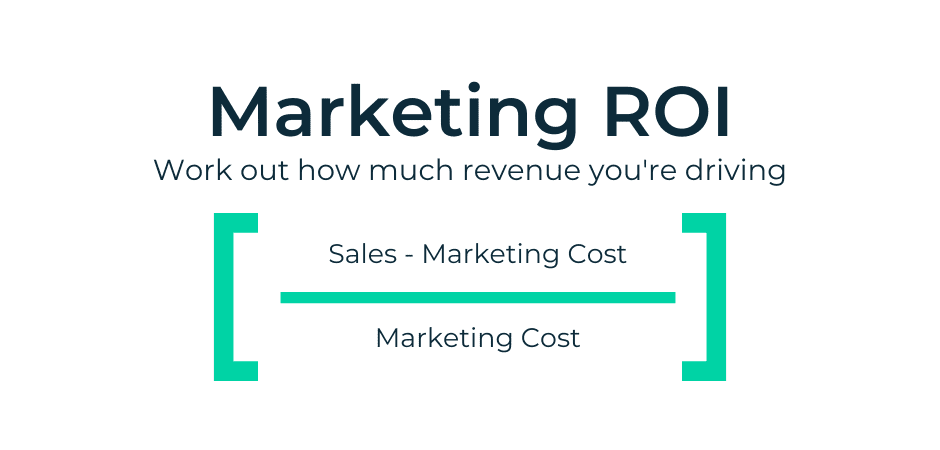
- Digital Strategy, Content Strategy, Lead Generation
Recent articles
our mailing list
Navigating Your Business’s Marketing Budget in 2024

What is a marketing budget and why does it matter in 2025?
A marketing budget is the financial plan businesses use to allocate funds across their marketing efforts. It is a strategic tool, to ensure spending is aligned with growth, revenue and investment goals. Building an effective marketing budget is critical to avoid waste and drive real results.
Crafting an effective marketing budget in 2025 requires balancing financial discipline with flexibility to adapt to changing digital trendsesults—especially for small and medium-sized businesses.
As we gear up for 2025, the world of marketing is still grappling with the age-old challenge highlighted by John Wanamaker – figuring out where our advertising money is well spent. Proxima’s eye-opening estimate of over $37 billion going down the drain in digital marketing emphasises the urgency for businesses, especially the Small and Medium-sized ones (SMBs), to get their marketing budgets in check.
No need to panic though. This easy to understand guide will help you learn how to avoid the common pitfalls of budgeting and make sure your marketing budget for 2025 is as effective as it can be to ensure a break-even, if not profitable time ahead. It’s time to take a cue from Wanamaker and get strategic. Let’s walk through some proven and practical strategies to make sure every dollar you invest, contributes to your business’s success. After all, in a world where the stakes are high, a well-thought-out plan is your best defense against wasted budgets and uncertain outcomes.

Understanding Customer Needs for Your Marketing Budget
Firstly, it’s essential to align your marketing budget format with your customers’ needs. Your marketing budget should reflect an understanding of what your target audience seeks, which can vary widely depending on your industry and market position. This initial step is pivotal in ensuring that your marketing efforts resonate with your customers and yield the best results.
To align your marketing budget with customer needs, start by reviewing past results. Analyse which campaigns were most effective and consider increasing the budget in those areas. Stay informed about market changes, including competitor activities and evolving customer expectations. Also, assess your team’s capabilities and allocate budget for training or outsourcing where necessary to meet these evolving needs.
What Are Your Business Goals?
Aligning your marketing budget with your business goals is a key step. This involves setting clear objectives for your marketing campaigns and ensuring that your budget allocation directly contributes to these goals. Whether it’s increasing brand awareness, lead generation, or entering new markets, your budget should be a reflection of these targets.
Aligning your marketing budget with business goals requires collaboration with stakeholders across your organisation. Work together to consider your marketing budget breakdown and where resources will be allocated. For instance, a goal to increase lead generation (e.g. paid-per-click and social media ads) than a goal to build brand awareness (content marketing and brand building efforts) require different allocation of spend. Getting this defined first encourages markeitng costs for small business to be aligned with intent and goals.
Utilise technology to link marketing spend to organisational goals and evaluate current investments to identify growth opportunities. Setting specific audience-based goals, informed by data insights, will ensure your marketing efforts are focused and effective. This strategy not only aligns with your business objectives but also optimises the impact of your marketing spend.
Cracking the Code: Calculating Your Marketing Budget
In 2025, according to a Gartner report, the average marketing spend from total revenue was 7.7%. This is the second consectutive year showing this figure, showing that marketing budgets have now stablised since the pandemic. The right marketing budget format helps businesses visualise where money goes, whether by percentage of sales, objectives and tasks, or affordability.
What is the rule of thumb for a marketing budget?
For small business owners, the rule of thumb is simple: set a budget that supports growth without stretching your finances too thin. The best marketing advice for small business is to treat your budget as an investment – you need to spend if you want to see a return. The key is balancing what you can realistically afford with what’s required to stay competitive in your market.
So what does this mean for you and your company? Well, when it comes to setting your marketing budget, there are a couple of popular methods you can consider:
- Percentage of Sales Method: This traditional approach involves allocating a percentage of your projected revenue to marketing. For most SMBs, this ranges from 5-10% of their annual revenue, although it can vary based on factors such as industry, business lifecycle, and growth goals.
- Objective and Task Method: This method involves identifying your marketing objectives and then determining the tasks required to achieve them. Each task is assigned a cost, leading to a comprehensive budget that is closely tied to your goals.
- Affordable Method: At the end of the day, businesses should only do what they can afford to do without risking the company. In this approach, companies determine their advertising budget based on available funds. If there are insufficient funds, the company might opt to forego advertising altogether. This method is often favored by small companies and startups.
Understanding ROI In Your Marketing Budget
Navigating the complexities of Return on Investment (ROI) is a critical aspect of formulating your marketing budget for 2025. An accurate forecast of ROI not only ensures efficient allocation of resources but also guides your strategic decision-making process.
By employing a blend of analytical techniques, you can gain a deeper understanding of your past investments’ impact and how they shape future financial planning. Here are some key methods to untangle and forecast ROI:
- Historical Data Analysis: Analyse the ROI of previous campaigns, offering a roadmap for future budgeting decisions.
- Customer Lifetime Value (CLV): Understanding CLV is instrumental in estimating the enduring impact of your marketing initiatives and validating your financial commitments.
- Attribution Modelling: Utilise various attribution models to discern which marketing touchpoints are most effective in driving conversions, enabling a more strategic allocation of your budget.

Incorporating Digital Marketing in Your Marketing Budget
SMBs should tailor their digital marketing budgets based on the specific requirements of PPC Google and social media campaigns. Whether opting for in-house management or partnering with agencies, it’s important to align these costs with your overall marketing strategy and objectives. Here’s a breakdown of what to consider for PPC Google and social media campaigns:
PPC Google Campaigns:
In 2025, the average cost-per-click (CPC) for Google Ads in Australia generally falls between AUD $2–$5, though this can swing higher depending on the industry and competition. Highly competitive areas like legal, finance, and insurance often push CPCs beyond AUD $10, while e-commerce and retail tend to sit on the lower end, sometimes under AUD $2.
When it comes to ad spend, most small to mid-size businesses now invest anywhere from AUD $5,000 to $20,000 per month on Google Ads, with daily budgets shaped by campaign goals and reach.
For management of Google Ad campaigns, expect to pay between $2,000-$6,000 per month, depending on the level of expertise and support you require.
Social Media Campaigns:
Social media marketing costs vary by platform and agency type. It’s important to estimate the cost in line with what your business can afford.
For an in-house social media marketing team, the yearly cost ranges between $65,000 – $120,000 AUD. This includes finding, training, and retaining talent, as well as setting KPIs and goals.
Working with a full-service social media marketing agency can cost between $2,000 – $22,000 AUD monthly. However, these costs can vary greatly depending on a company’s needs and industry. These agencies provide comprehensive services, including managing your social media presence across various platforms, creating and maintaining websites, creating and managing paid ads and more.
Final Thoughts
Crafting an effective marketing budget for 2025 is a balance of financial acumen, industry awareness, and understanding your target audience. It’s clear the average marketing budget for small business varies depending on your goals, needs and industry. Embracing the dynamic nature of marketing and staying open to adaptation is key to thriving in the competitive digital landscape. Remember, these budget ranges are just starting points. Your unique business needs and goals will ultimately determine the ideal budget for your campaigns..
Looking for help to enhance your marketing budget for 2024? Whether you’re struggling with budget revisions or seeking the expertise of a savvy marketing agency, we’re here to make your journey easier. Connect with us today, and let us help you make the best out of your marketing strategy.

Article by
Ben Kinnaird
General Manager / Sports Nut / Dad
Our captain of operations, Ben has over 15 years of experience in sales, marketing and all things digital. Before joining SDM in 2014, Ben worked as the Head of Marketing for Reebok APAC.[…]

Article by
Simon Gould
CEO / Founder / Dad
Founder and leader, Simon established SDM back in 2012. Since then, he has helped 150 clients (and counting) to achieve their digital goals.[…]



